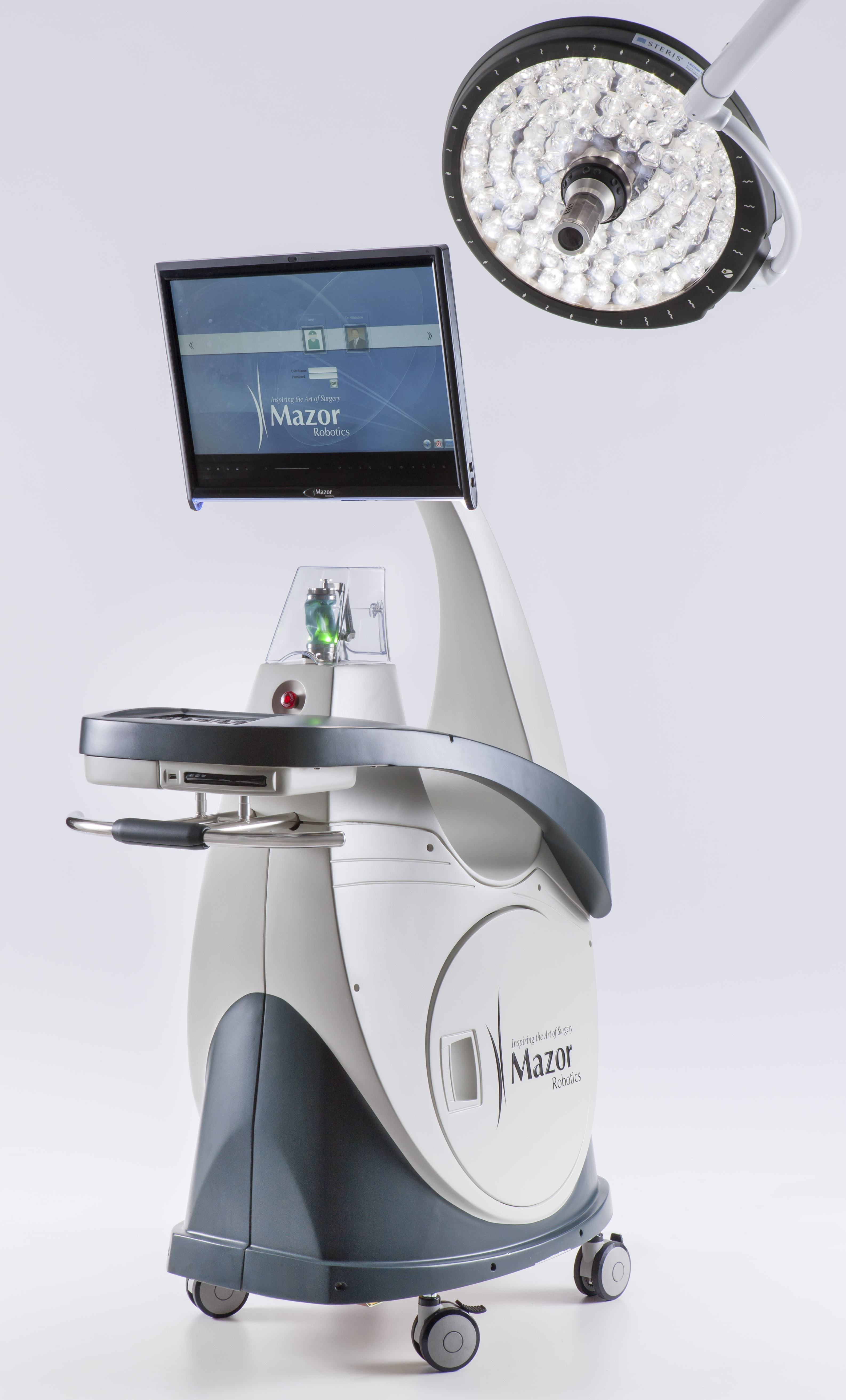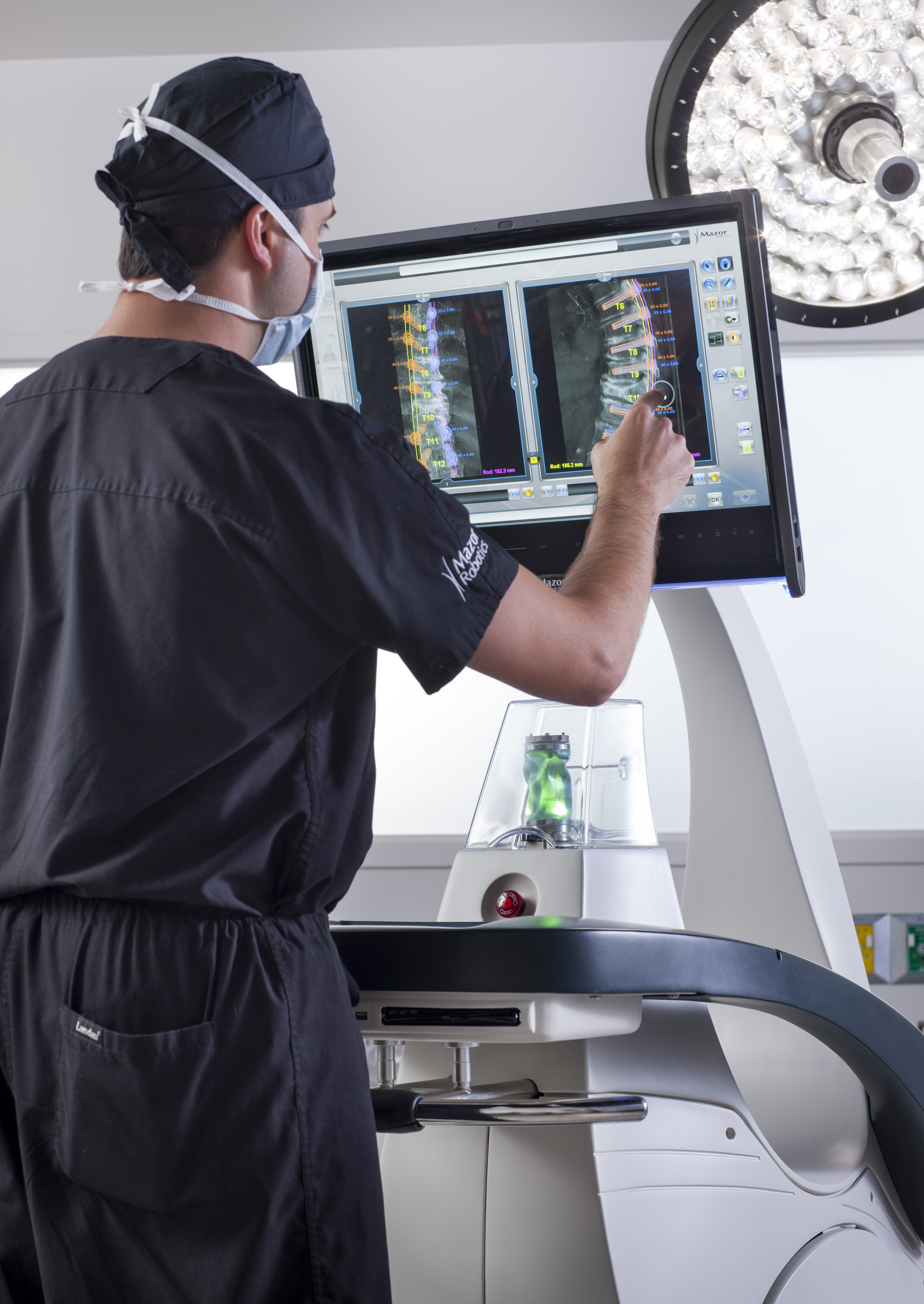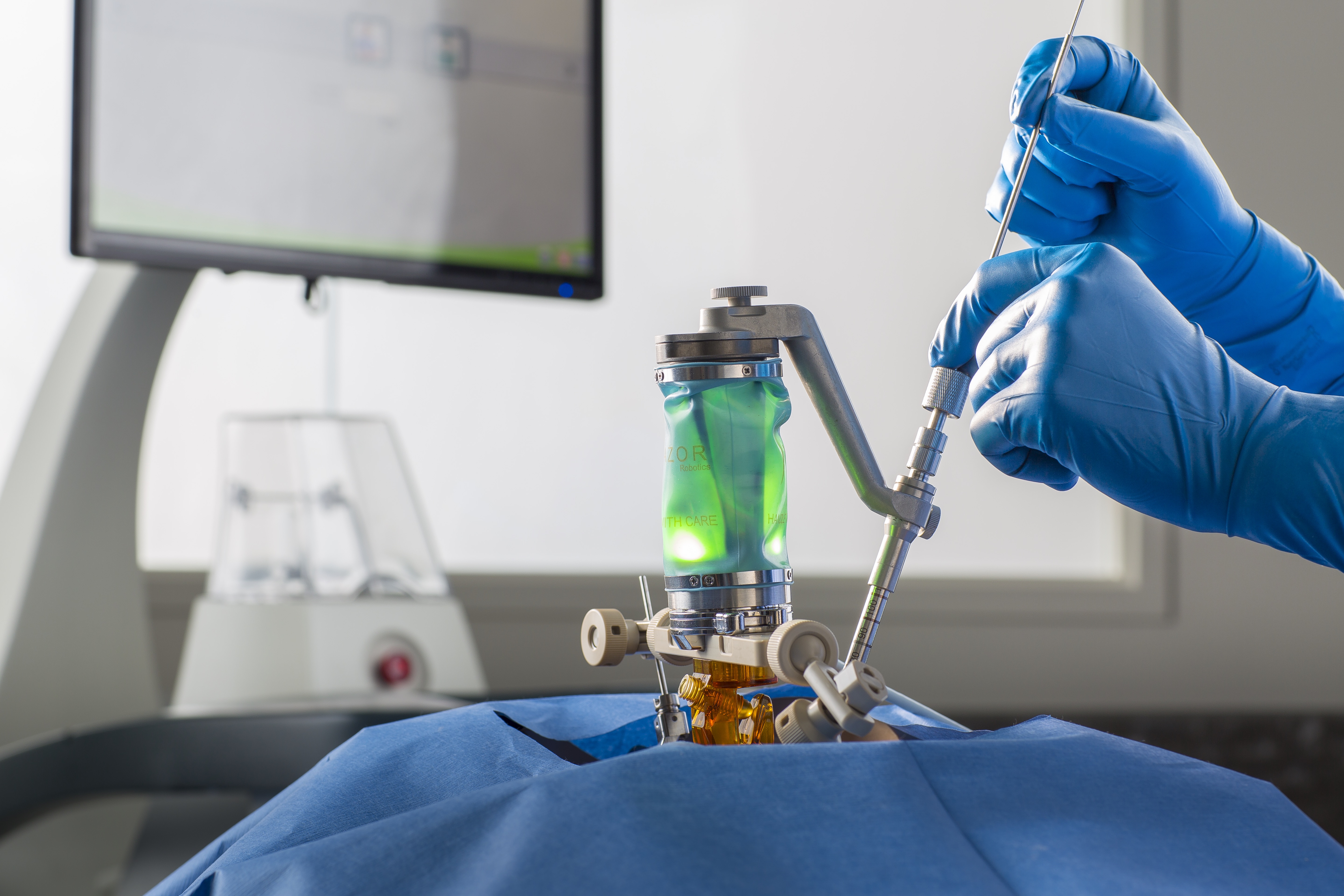- Locations
- Find a Physician
- By Physician
- By Department
- The Center for Spine Health
- Hand & Wrist Center
- Shoulder & Elbow Center
- Foot & Ankle Center
- Joint Replacement Center
- The Sports Medicine Center
- Pediatric Orthopedic Center
- Trauma & Fracture Center
- Osteoporosis and Bone Health
- Oncology Center
- Cartilage Repair Center
- Concussion Rehab Center
- OrthoDirect
- Careers
- Patient Portal
- Intranet
New advances in robotic surgery enhances spine outcomes at the Center for Spine Health
Spine Navigation and 3D Imaging
 Over the past 10 years there has new robotic technology introduced into the operating room that provides the spine surgeon new capabilities associated with the precision of robotic technology.
Over the past 10 years there has new robotic technology introduced into the operating room that provides the spine surgeon new capabilities associated with the precision of robotic technology.
For decades, automotive manufacturers have converted entire car factories over to robotic arms that provide more precise welds. Porsche, for example, uses robotic manufacturing extensively to improve the precision associated with the assembly of engines and body components. The robotic technology greatly reduces variation associated with the assembly by human hands and improves the quality of the engine and its ability to provide longer than normal mileage.
It the area of spine surgery, robotic technology similarly provides a new level of precision related to navigation within the internal components of the body. Software within the robotic system links with three-dimensional diagnostic images from MRI and C-arm fluoroscopy.
While the human eye can differentiate among 256 shades of gray, the robotic software can diffferentiate between 65 million gray scales. Consequently, the robotic system uses this heightened precision to control the robotic arms, preventing instruments from coming into contact with any sensitive tissue around the nerves or spinal cord.
The goal of robotic systems in spine surgery is to improve placement of implants and screws — especially in patients that have challenging anatomy, such as obesity — while at the same time allowing access through smaller incisions. Each year, new technology continually introduces robotic probes and camera systems that are capable of getting into tight spaces. Minimally invasive surgery provides significant benefits to the spine surgery patient, including: smaller incisions, lower risk of infection, and minimal muscle disruption. All of this reduces pain after surgery during recovery, less need for the use of opiods and the risk of addiction, and a shorter hospital stay. In fact some patients are able to go home later the same day.
 The Mazor Robotic Surgery System manufactured by Medtronic, one of the world’s largest medical equipment companies, enables the spine surgeon to do advanced planning of a surgery the day before to map out the spine surgery, the fusion and the precise placement of any plates or screws needed in the surgery. Placement of fixation screws in particular can be mapped out in advance to show the optimal angle of screws that is than replicated by the robotic system during the surgery the next day.
The Mazor Robotic Surgery System manufactured by Medtronic, one of the world’s largest medical equipment companies, enables the spine surgeon to do advanced planning of a surgery the day before to map out the spine surgery, the fusion and the precise placement of any plates or screws needed in the surgery. Placement of fixation screws in particular can be mapped out in advance to show the optimal angle of screws that is than replicated by the robotic system during the surgery the next day.
The Mazor Robotic System costs about $2 million for a hospital to install into the operating room. Additional time is needed for the spine surgeons to learn all the capabilities for robotic spine surgery.
Mapping out the surgery in advance speeds the spine surgery the next day, as the robotic arms are preset precisely to a quarter of a millimeter that then enable the spine surgeon to insert a tubular retractor the width of a large ball point pen through an incision at the optimal angle. The Mazor robot also controls the speed at which screws are installed, creating the ideal speed of rotation.
The spine surgeons at the Center for Spine Health at University Orthopedics were some of the first in the region to begin using robotic surgery. Because the surgery can be planned and mapped out in advance, surgery the next day goes much faster. This means that the patient is spending less time under anesthesia and less time under fluoroscopy. Because the Mazor robotic surgery system enables the surgeon to operate through a 1-inch long incision, rather than an open 3-inch incision, the patient has less blood loss, less tissue disruption and less pain as they go through rehab and therapy. Consequently, they are typically back to activity much faster than with traditional spine surgery.”
It’s important to emphasizes that the spine surgeon is still doing the surgery, not a robot. The robotic system is simply performing the surgery the surgeon maps out in advance. The robotic system is simply adding more precision than what a human is able to provide.









